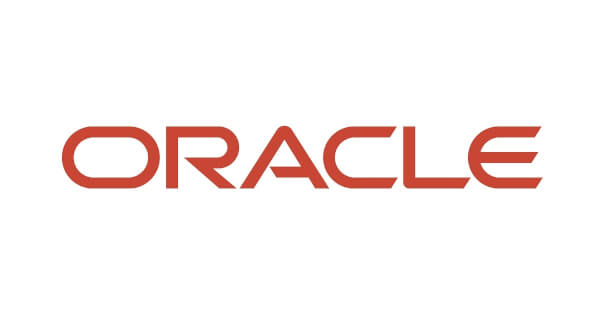As the crypto market navigates its latest wave of volatility, one name consistently remains at the forefront of the corporate Bitcoin discussion: MicroStrategy. The enterprise software firm, led by staunch Bitcoin evangelist Michael Saylor, has famously tethered its corporate treasury to the world’s leading cryptocurrency. Recent market jitters, however, have once again shone a spotlight on MicroStrategy’s highly leveraged Bitcoin strategy, leading to renewed scrutiny and what some are calling “MSTR Index concerns.” Yet, Saylor remains as resolute as ever, dismissing these apprehensions and reiterating his long-term vision for Bitcoin’s role in the company’s future.
Saylor’s Unwavering Conviction
Michael Saylor has made no secret of his belief that Bitcoin is the superior treasury reserve asset, a conviction he has consistently articulated since MicroStrategy began accumulating BTC ($83,963.00) in 2020. Despite market downturns and the inherent volatility of digital assets, Saylor’s rhetoric remains unchanged. His recent dismissal of the “MSTR Index Concerns” serves as a powerful testament to his unwavering commitment, suggesting that he views current market conditions as mere short-term noise in Bitcoin’s long-term ascent. For Saylor, MicroStrategy’s strategy is not a speculative bet but a fundamental shift in capital allocation designed to preserve and grow shareholder value over decades.
Deconstructing the MSTR Index Concerns
The phrase “MSTR Index Concerns” likely refers to the market’s apprehension regarding several aspects of MicroStrategy’s unique financial position. These concerns typically revolve around:
- Stock Performance Correlation: The tight linkage between MSTR’s stock price and Bitcoin’s price, making it a proxy for direct BTC exposure, but with added corporate overhead and debt.
- Leverage and Debt: The significant amount of debt MicroStrategy has taken on to finance its Bitcoin purchases, including convertible notes. This raises questions about interest rate sensitivity and potential solvency risks if Bitcoin prices were to plummet below certain thresholds.
- Market Premium/Discount: Whether MSTR’s stock trades at a premium or discount to its net asset value (NAV), which is largely composed of its Bitcoin holdings. A consistent discount could indicate investor skepticism about the strategy or management.
- Liquidity Risk: The potential challenges of unwinding such a large Bitcoin position without significantly impacting the market, should a strategic pivot ever be deemed necessary.
These are valid points of discussion for traditional investors accustomed to less volatile corporate treasury strategies. Saylor’s counter-argument typically centers on Bitcoin’s scarcity, its role as a hedge against inflation, and its potential for asymmetric returns over extended periods, outweighing short-term risks.
MicroStrategy’s Pioneering Bitcoin Accumulation
MicroStrategy’s journey into Bitcoin began over five years ago, setting a precedent for public companies to adopt digital assets as primary treasury reserves. The company has amassed a substantial Bitcoin treasury, primarily through a combination of excess cash flow, convertible debt offerings, and equity raises. This aggressive accumulation strategy has positioned MicroStrategy as the largest corporate holder of Bitcoin globally, transforming its business model and attracting both fervent supporters and vocal critics.
- Approximate BTC Holdings: As of late 2025, MicroStrategy holds a significant portion of Bitcoin, typically exceeding 200,000 BTC.
- Average Acquisition Price: While subject to ongoing purchases, the company’s average acquisition price per Bitcoin has steadily risen but remains strategically below current market highs, offering a buffer against declines.
- Financing Methods: A mix of unsecured convertible senior notes and at-the-market equity offerings has fueled the Bitcoin acquisitions, reflecting a calculated risk strategy.
Broader Implications for Corporate Treasuries
MicroStrategy’s audacious pivot has ignited a global debate about the future of corporate treasury management. While most publicly traded companies still adhere to conservative cash and short-term investment strategies, MicroStrategy has demonstrated an alternative, albeit higher-risk, path. Saylor’s unwavering stance, despite market scrutiny, emboldens those who believe Bitcoin offers a viable, long-term store of value and growth asset. However, it also serves as a cautionary tale for companies without the same conviction or risk tolerance, highlighting the potential for significant stock price volatility tied to an asset like Bitcoin.
Conclusion
As MicroStrategy continues its deep dive into the Bitcoin ecosystem, Michael Saylor’s dismissal of “MSTR Index Concerns” underscores a fundamental philosophical divide in the financial world. On one side are traditionalists who see the strategy as overly risky; on the other, Bitcoin maximalists and Saylor himself, who view it as a prudent, forward-thinking move in an evolving global economy. For investors, MicroStrategy remains a unique bellwether for corporate Bitcoin adoption, offering both high potential reward and inherent volatility, making Saylor’s leadership and the company’s strategy a perennial focal point in the crypto-financial landscape.
The post MicroStrategy’s Unwavering Bitcoin Bet: Saylor Reassures Investors Amidst MSTR Index Concerns appeared first on FXcrypto News.














 24h Most Popular
24h Most Popular







 Utilities
Utilities